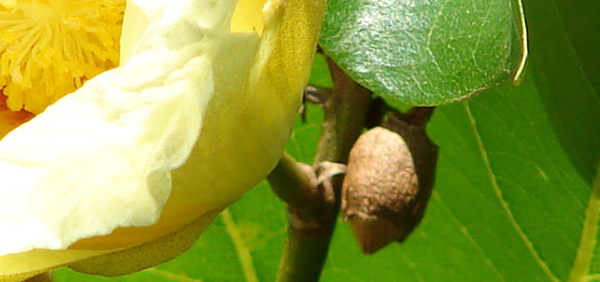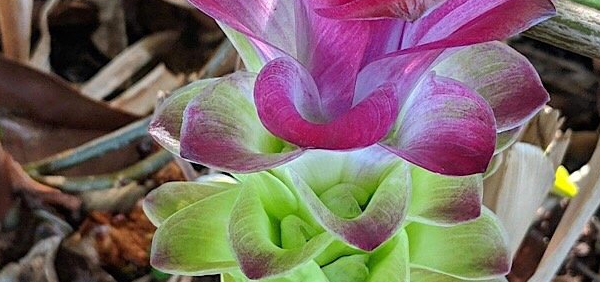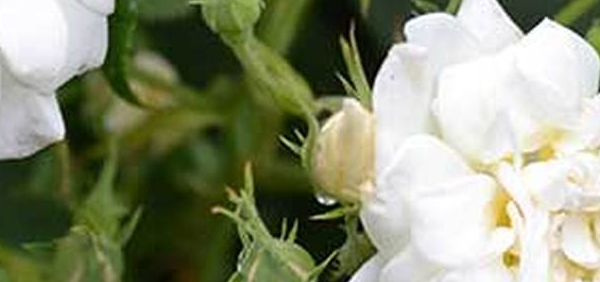mashaparni :
 Black gram originated in India, where it has been in cultivation from ancient times and is one of the most highly prized pulses of India and Pakistan. The coastal Andhra region in Andhra Pradesh is famous for black gram after paddy. The Guntur District ranks first in Andhra Pradesh for the production of black gram. Black gram has also been introduced to other tropical areas mainly by Indian immigrants.The product sold as black lentils is usually the whole urad bean, whereas the split bean (the interior being white) is called Ulunthu in Tamil, Minumulu in Telugu,"Uddu" in Kannada, Urad Dal in Hindi, or white lentils.Vigna mungo, black gram, black lentil, mungo bean (not to be confused with the much smaller true black lentil (Lens culinaris)), black matpe bean, Sanskrit / ma, is a bean grown in the Indian subcontinent. At one time it was considered to belong to the same species as the mung bean.
Black gram originated in India, where it has been in cultivation from ancient times and is one of the most highly prized pulses of India and Pakistan. The coastal Andhra region in Andhra Pradesh is famous for black gram after paddy. The Guntur District ranks first in Andhra Pradesh for the production of black gram. Black gram has also been introduced to other tropical areas mainly by Indian immigrants.The product sold as black lentils is usually the whole urad bean, whereas the split bean (the interior being white) is called Ulunthu in Tamil, Minumulu in Telugu,"Uddu" in Kannada, Urad Dal in Hindi, or white lentils.Vigna mungo, black gram, black lentil, mungo bean (not to be confused with the much smaller true black lentil (Lens culinaris)), black matpe bean, Sanskrit / ma, is a bean grown in the Indian subcontinent. At one time it was considered to belong to the same species as the mung bean.HISTORICAL AND MYTHOLOGICAL REVIEW:
Black gram originated in India, where it has been in cultivation from ancient times and is one of the most highly prized pulses of India and Pakistan.Taxonomical Classification
Kingdom: Plantae - Plants
Subkingdom: Streptophyta
Superdivision: Spermatophyta - Seed plants
Division: Magnoliophyta - Flowering plants
Class: Magnoliopsida - Dicotyledons
Family: Fabaceae
Genus: Phaseolus
Species: Phaseolus mungo
Allied species:
Azukia mungo (L.) Masam., Phaseolus hernandezii Savi, Phaseolus max sensu auct., Phaseolus mungo L., Phaseolus mungo L. var. radiatus sensu Baker, Phaseolus radiatus Roxb. non L., Phaseolus roxburghii Wight & Arn. (ILDIS, 2009).VERNACULAR NAMES
Sanskrit: Shurpaparni,Suryaparni,Pandura,Pandulomashaparni,Hayapucchika,Hamsamaya,Swadumaya,Mamsamasha,Mahasaha,Kambojika,Kamboji,KrushnavrunEnglish: green gram, Black gram, urd bean, urad bean, black lentil, black matpe bean, mungo bean
Hindi: उड़द दालuṛad dāl, उरद दाल urad dāl
Urdu: :اورد دال urad dāl
Telugu: మినుములు minumulu and Uddhi Pappu in Rayalaseema
Bengali: বিউলি, কলাই , মাসকলাই mashkalai ḍal
Marathi: उडीदuḍid
Konkani: Udada Dali
Oriya: ବିରି ଡାଲି biri ḍāli
Gujarathi: અળદ aḷad, અડદ aḍad
Tamil: உளுந்து uḷuntu
Malayalam: ഉഴുന്ന്uẓunu
Kannada: ವಿಗ್ನಾ ಮುಂಗೊ uddina bēḷe, ಉದ್ದು uddu
Punjabi: dāl māsh
Sindhi: ڪارو گرام
Arabic: عدس أسود
Spanish: frijol mungo, fréjol negro, frijol negro, lenteja negra, urd
Assamese: Mati-Maah
Japanese: ケツルアズキ
Chinese: 黑克 Hēi kè
French: ambérique, haricot urd
German: Urdbohne, Linsenbohne
Burma: မတ်ပဲ matpe
Nepal: मास mās
Persian: گرم سیاه
Sinhalese: උඳු undu
Tulu: urdu bele
Greek: μαύρο γραμμάριο mávro grammário
Varities:
Definition
Synonyms
Synonyms in Ayurveda: mashaparni, krishnavrinta, kamboji, hayapucchika, mansamasha, sinhamukhiRasa: Madhura Tikta
Guna: Laghu Snigdha
Veerya: Sheetha
Vipaka: Maduram
Karma: Pittahara Vatahara
Cultivation:
A plant of the drier tropics, where it is found at elevations up to 2,000 metres. It grows best in areas where annual daytime temperatures are within the range 22 - 35°c, but can tolerate 8 - 40°c. The plant does not tolerate frost. It prefers a mean annual rainfall in the range 650 - 900mm, but tolerates 530 - 2,430mm. Rain at flowering time has a very adverse effect upon seed yields. Plants are not adapted to wet, humid areas with high rainfall, but can, however, be grown in the dry season of wetter areas so long as this is at least 4 months in duration.Requires a sunny position. Grows well in well-drained, fairly heavy fertile soils. Tolerant of moderate levels of salt in the soil. Prefers a pH in the range 5.5 - 6.5, tolerating 4.5 - 7.5. Established plants are drought resistant.
Immature pods can be harvested about 60 - 80 days after sowing. Mature beans can be harvested after 75 - 130 days.
Yields of 500 - 650 kilos per hectare of dried seeds can be obtained. The average yield of dry seeds in India can vary between 340 - 1,500 kilos per hectare.
There are some named varieties.
There are three main forms of this plant:-
Var mungo. A large seeded, early maturing form with black seeds.
Var viridis Bose. A small seeded late maturing form with brown, green or grey seeds.
Ver silvestris Lukoki, Maréchal & Otoul. The original, wild form.
Most cultivars require short daylengths.
This species has a symbiotic relationship with certain soil bacteria, these bacteria form nodules on the roots and fix atmospheric nitrogen. Some of this nitrogen is utilized by the growing plant but some can also be used by other plants growing nearby[]. When removing plant remains at the end of the growing season, it is best to only remove the aerial parts of the plant, leaving the roots in the ground to decay and release their nitrogen
Propogation:
Seed - presoak for 12 hours in warm water and sow in situ. The seed generally sprouts within 7 - 10 daysHarvesting:
Harvesting of Vigna mungo seeds can be done by picking the pods or by uprooting or cutting the whole plants.Phytochemistry:
Black gram is very nutritious as it contains high levels of protein (25g/100g), potassium (983 mg/100g), calcium (138 mg/100g), iron (7.57 mg/100g), niacin (1.447 mg/100g), Thiamine (0.273 mg/100g), and riboflavin (0.254 mg/100g).The phytochemical analysis of the powdered seeds revealed the presence of carbohydrates, flavonoids, saponins, tannins, alkaloids, steroids and vitamin C qualitatively, whereas flavonoids was analysed quantitatively too.PHARMACOLOGY:
- Masha taila,
- Samisha masha taila,
- Mashadi modaka,
- Ikshuraka choorna
Parts used for medicinal purpose
Root, Whole plant, ,Dosage:
Decoction 50-100 ml;Substitute:
Flour from the seed is used as a substitute for soapAdultrants:
Adulteration of urad (Phaseolus mungo L.) husk, churi or bhusi by addition of soapstone powderControversy:
Vigna mungo resembles green gram (Vigna radiata (L.) R. Wilczek) with two main differences: the corolla of Vigna mungo is bright yellow while that of Vigna radiata is pale yellow; black gram pods are erect whereas they are pendulous for green gram. Black gram is somewhat more hairy than green gram; the white hilum also protrudes from the seed. Black gram is sown on heavier soils and green gram is sown on lighter soils (Göhl, 1982).Commercial value:
The main producer of black gram is India, which produces about 1.5 million t of seeds annually (Sharma et al., 2011). India consumes its entire production. The other main producers (Myanmar and Thailand) are the major exporters. Globally black gram accounts for more than 40% of total legume seeds traded (CRN India, 2011).Morphology:
Histology:
The plant, Vigna mungo produces a plenty of root nodules. The mature nodules are small, mostly oval to circular and pink to pinkish red in color. A transverse section of a nodule reveals a central pink colored ‘bacterial zone’ which is enveloped by a whitish-gray cortical layer as observed under electron microscopic study in present investigation. The root nodule of the plant contained bacteroids. The bacteroids were convoluted, rod shaped to ellipsoidal in shape.and it forms symbiotic relationship with the legume.Geographical distribution:
Vigna mungo originated from central Asia and India from where it was domesticated. It is now found in many tropical areas of Asia, Africa and Madagascar. It is cultivated in the USA and Australia as a fodder crop (Jansen, 2006; Arora et al., 1989).ECOLOGICAL ASPECT:
It is generally found in lowlands but can grow up to 1800 m above sea level provided there is neither frost nor prolonged cloudiness (Ecoport, 2011; Arora et al., 1989).Plant conservation:
Least concernGeneral Use:
Black gram is widely used for culinary purposes in India. It is used to cook dals, soups, curries, stews and side dishes. Black gram can also be used to make homemade face packs to treat skin problems like acne. It is used in Ayurvedic medicines due to the various health benefits that it offers. Black gram is also used for its high fiber content.Therapeutic Uses:
Systemic Use:
According to texts of ayurveda this bean is heavy to digest and increases the moistness of body tissues. It is sweet to taste and hot in potency. All these properties help to normalize or calm vitiated vata. Consumption of this bean increases kapha and pitta. Imbalanced vata dosha causes many diseases and also leads to men health problems like erectile dysfunction, premature ejaculation, low sperm count and motility etc. Hence Ayurveda acharyas recommend use of “masha” in many health conditions.Administration:
Used internally and externallyPharmacological:
It can be used medicinally as anti - inflammatory, analgesic, ulcerogenic , hypoglycemic, hepatoprotective, immunostimulatory, anticonvulsant, antioxidant, narcotic activity.Clinical trials:
Research:
Precautions:
Urad dal can be eaten during pregnancy as it does not have any adverse side effects. But it is generally advisable to avoid Urad dal and dishes made of Urad dal during constipation in pregnant ladies to prevent stomach problemsToxicity studies:
One of the main issues of consuming high amounts of black gram is that it increases the amount of ureic acid in your blood. As a result, it can stimulate the calcification stones in the kidney. Even though it is known to prevent the same, very high quantities of black gram can induce the very thing you want it to prevent. It can also lead to gall stones or gout.Use in other system of medicine:
In traditional medicine, the seed is used for its suppurative, cooling and astringent properties, e.g. pounded and applied as a poultice on abscessesCONCLUSION:
Black gram is an erect, hairy, bushy, annual plant with a well-developed taproot, growing 30 - 100cm tall. The stem is diffusely branched from the base. Sometimes the plant adopts a twining habitThe plant is often cultivated in many areas of the tropics, especially Asia, for its edible seed. It is also sometimes used medicinally and as a source of soap, as well as being grown as a green manure crop.
Photos of mashaparni - ,
- Courtesy: http://tropical.theferns.info/plantimages/a/1/a1107da4efc69e76bc0218ad83ff33b2dc8180f9.jpg
- Courtesy: http://d2seqvvyy3b8p2.cloudfront.net/e610a48967fa8098e16e35f5a54fcc76.jpg
- Courtesy: http://plantillustrations.org/illustration.php?id_illustration=123134&SID=0&mobile=0&code_category_taxon=9&size=1
- Courtesy: http://plantillustrations.org/illustration.php?id_illustration=41306&SID=0&mobile=0&code_category_taxon=9&size=1
- Courtesy: http://plantillustrations.org/illustration.php?id_illustration=161985&SID=0&mobile=0&code_category_taxon=9&size=1
KEY WORDS: mashaparni, Phaseolus mungo Linn., Vigna mungo Hepper
- » Classification and names of mashaparni
- » Synonyms and definitions of mashaparni
- » Drug Properties of mashaparni
- » Chemical Constituents of mashaparni
- » Standardization of mashaparni
- » Parts used and Dosage of mashaparni
- » Morphology and Histology of mashaparni
- » Distribution and Conservation of mashaparni
- » Cultivation of mashaparni
- » mashaparni in the market
- » Medicinal Uses of mashaparni
- » Researches and clinical trails of mashaparni
- » mashaparni in other sytems of medicine
- » Ayurvedic formulations with mashaparni
- » Images of mashaparni

















